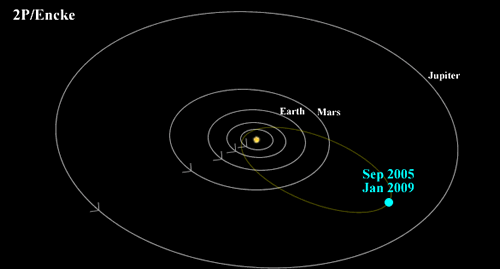Jupiter-family Comets
Jupiter-family comets are short-period comets with orbital periods less than 20 years. They are named as such since their current orbits are primarily determined by the gravitational influence of Jupiter.
Although the orbits of Jupiter-family comets are contained within or do not extend much beyond the orbit of Jupiter, it is thought that they originate in the Kuiper Belt, a collection of rock-ice bodies located just beyond the orbit of Neptune. Collisions between Kuiper Belt objects break off small chunks of ice and rock, which can then be gravitationally perturbed by Neptune into highly elliptical orbits around the Sun. As they approach Jupiter, the orbits of these small bodies may be perturbed further, resulting in a tighter ellipse and a shorter orbital period.
This origin for Jupiter-family comets is supported by the observation that they all have relatively low orbital inclinations (the average around 18o to the plane of the ecliptic), and most orbit in the same direction as the planets. This is in contrast to the Halley-type comets and long-period comets whose orbital inclinations can be very high, and which are thought to originate in the spherical Oort cloud.
There are currently over 400 Jupiter-family comets known, most of which are extremely faint. This is due to the rapid depletion of their volatiles through multiple trips to the inner Solar System, brought about by their short orbital periods.
Study Astronomy Online at Swinburne University
All material is © Swinburne University of Technology except where indicated.


